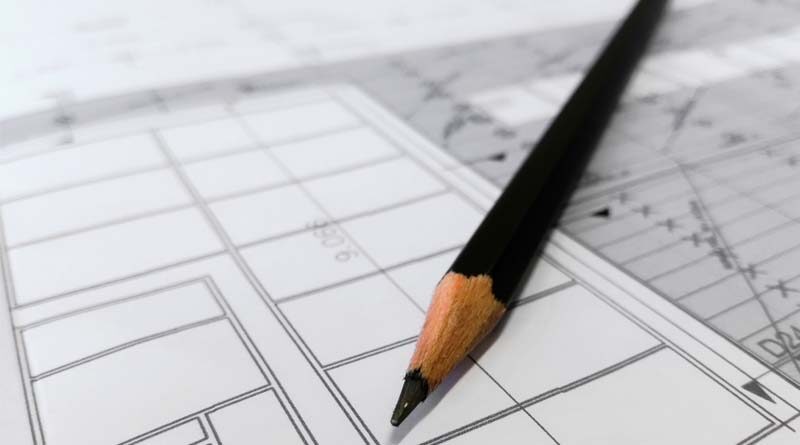COVID-19’s Impact on Healthcare Design and Construction
By Richard Simone
The coronavirus entered the U.S. in January 2020, and by March, the virus virtually shut down the entire country. All over the world, the pandemic-induced “new normal” has caused nations and its residents to rethink and adopt novel social and health protocols. The healthcare and construction industries were at the forefront and, in many cases, had to be the nimblest to react and lead within the new direction.
COVID-19 and the way people view daily habits, environments, interactions, and overall safety will remain a reality for years to come. The necessary reassessments must be reflected in the stipulations for immediate protection and to prepare for the next widespread health emergency or natural catastrophe.
Hospitals have long been acutely designed to mitigate infectious diseases. Also, the success rates in safely treating patients are increasingly high when proper behaviors are used and access to enough personal protection equipment (PPE) is not in question. However, it’s clear those factors aren’t enough to put patients’ and employees’ concerns brought on by the current unprecedented pandemic at ease.
Designing for the New Normal
Planning healthcare facilities in a post-COVID world could include complex operational and infrastructure design considerations. An immediate concern is for hospitals to keep elective, or necessary but not life-threatening, surgery cases going while dealing with overflowing emergency departments and intensive care unit beds. The challenge is making patients feel comfortable to have surgery during a pandemic. For example, a few months removed from the spike in coronavirus cases in New York, hospitals are still not seeing patients return, and most procedures are only back to 50% to 70% of what they were. In response, medical centers are already implementing design and staff reconfiguration plans to create segregated areas within certain units or adjacent to the main hospital to ensure fluidity and increase patient satisfaction.
For the long term, hospitals must take a hard look at prioritizing infrastructure upgrade projects. Building new HVAC (heating, ventilation, and air conditioning) systems and improving the medical gas infrastructure may not have a significant return on investment at first blush, but will be factors patients start to measure when deciding where to have treatments done. It will likely become the norm for a patient to ask about the surgeon as well as HVAC systems, and maybe not in that order.
Healthcare systems are also considering micro hospital development with urgent care and inpatient capabilities on a smaller scale. Additionally, expanding services to more rural catchment areas is being explored to get treatment options closer to patients while alleviating the overflow of the main acute care hospitals. Going forward, hospitals may move more services that must continue regardless of a pandemic (i.e., childbirth) out to an ambulatory or free-standing center model.
Some of the supply chain, speed-to-market, and labor issues the healthcare construction industry continues to experience has sparked new discussions on alternative development, such as increased consideration for modular solutions, which the medical sector has previously been slow to embrace. As the construction industry faces a potential decline in skilled labor, modular lends itself to cross-training, which cannot happen on a traditional commercial project site. Benefits also include controlled construction environments, waste reduction, and quality control, all of which create tremendous value.
Adjusting to Evolving Construction Guidelines
While it’s interesting to consider how healthcare design could potentially change forever, project managers currently grapple with construction challenges due to frequently changing guidelines that vary from city to city. The requirements remain unclear, and thus, the safety of workers is the concern and main priority. At the same time, adjusting to new rules almost daily continues to cause delays as substantial as the shutdowns, further postponing the delivery of much needed medical space and economic recovery.
In most metro areas, new guidelines require additional staff on all projects to check in on workers and ensure that protocols are being followed. For example, in New York City, managers must maintain contact tracing and cleaning logs, take workers’ temperatures, provide specific signage, and make sure social distancing is in place. Shift work has been implemented at some sites to allow for social distancing. In this situation, separate entry and exit points are designating for the shift arriving and the shift leaving, which sometimes creates long lines of workers that span entire city blocks awaiting site access.
As aforementioned, the healthcare construction industry is also experiencing a decline in available skilled labor. Some tradesmen don’t want to come back to work due to COVID-19 concerns, and others are making as much or perhaps more money staying home with the increase in unemployment benefits. Supply chain issues also persist with the unexpected closures of manufacturing plants in different parts of the U.S. at times.
Despite the many challenges, healthcare system managers and construction consultants are working diligently to reimagine medical facility designs for the future while mitigating today’s ever-changing construction guidelines. One thing is for certain; there will be significant changes coming, and the healthcare industry will be at the helm.
Richard Simone is CEO and president of Central Consulting & Contracting, a full-service construction management and general contracting company that specializes in healthcare facilities. He has over 35 years of experience in the construction industry. Central Consulting & Contracting has worked with many major healthcare systems across the U.S. East Coast on complex projects from hybrid robotic operating suites to ground-up development and facility planning.

